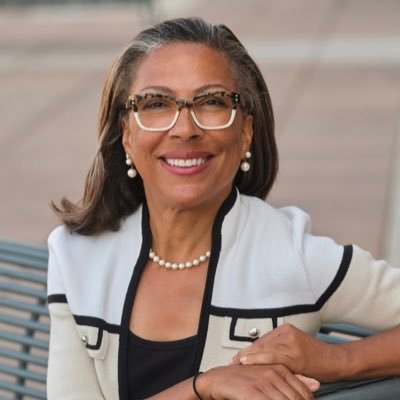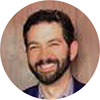Editor’s note: I got a chance to sit with our Academy president, Dr. Tamara R. Fountain. She has had a tremendous career taking leadership roles within Ophthalmic Mutual Insurance Co. (OMIC), American Society of Ophthalmic Plastic and Reconstructive Surgery (ASOPRS) and the Academy.
Dr. Chelnis: Dr. Fountain, thank you for taking the time to talk to me and drop just a few of your many pearls of wisdom for the new residency graduates reading the YO Info Graduate Edition. You’ve had a chance to see our field from the top down. From the OMIC board, the ASOPRS presidency and now the Academy presidency, you’ve pulled back nearly every curtain there is to peek behind! What do you see as being on the horizon for our new graduates?
 Dr. Fountain: Thanks, James. I remember when I was starting out, older, late-career colleagues would lament that my generation had missed the “golden age” of medicine implying the good days of ophthalmology were over. If good days meant $3,000 cataract reimbursements, then yes, maybe they were right! Maybe all physicians have peaked in terms of buying power. But, medicine, at its core, is a profession, despite high barriers to entry and years of training, that bestows on its members the honor and privilege to minister to people in the darkest, most vulnerable times of their lives. That point won’t change, and people who choose medicine to affect medical care disparities, global health, conduct research and so on, will always find that there is something there for them.
Dr. Fountain: Thanks, James. I remember when I was starting out, older, late-career colleagues would lament that my generation had missed the “golden age” of medicine implying the good days of ophthalmology were over. If good days meant $3,000 cataract reimbursements, then yes, maybe they were right! Maybe all physicians have peaked in terms of buying power. But, medicine, at its core, is a profession, despite high barriers to entry and years of training, that bestows on its members the honor and privilege to minister to people in the darkest, most vulnerable times of their lives. That point won’t change, and people who choose medicine to affect medical care disparities, global health, conduct research and so on, will always find that there is something there for them.
The pace of medical innovation is perhaps greater than at any time in modern history. Promising new biologic therapies that can be customized to a patient’s disease type, we are able health monitoring capabilities, robotics and [artificial intelligence] that extend the reach and effectiveness of human minds and hands. It’s all pretty remarkable when you think about it.
One cautionary thought though — with all the discovery and advancement in medicine, we must remember that there’s no app or computer algorithm that can comfort someone facing a health crisis. It’s important to remember that sometimes our greatest clinical tool is the art of listening, comforting and reassuring, something at least for the time being, is beyond the reach of the most sophisticated deep learning computer model.
Dr. Chelnis: That’s a great point. With all the changes in the field, it sounds like a good idea to rely on our core strengths, and our power to connect with patients is certainly one of those. Can we talk about what other supports there are for young graduates? Particularly from organized medicine?
Dr. Fountain: Well, of course I’m going to toot the Academy’s horn a little bit here! About 30 years ago, the Academy decided to make a concerted investment in its younger members. The YO program was created in the mid-’90s to support and promote the professional development of our youngest members. Trainees and docs in their first five years of practice have essentially their own “YO Academy” within the larger Academy.
Education, advocacy, practice management and communications are promoted differently within this program, customized to the unique needs of the newest generation of ophthalmologists. The greatest value, however, may lie in the ready-made community of like-minded peers that YOs are welcomed into upon joining the Academy. It’s been so successful that YOs tend not to want to leave when they’ve aged out. Wait, how old are you again, James? Just kidding!
The Academy may have been the first to cater to the YO demographic but it’s certainly not alone in recognizing the return on investment for this group. Most state and subspecialty societies now have dedicated YO programs and committees and even OMIC provides critical financial support to the Academy’s YO program (if you score a ticket to the YO Global Reception at Annual meeting, make sure to thank them!) and they also offer new doctor discounts for YOs choosing them as their liability carrier.
Overall, YOs are the darlings of most organizations because they are the seeds being planted and watered in hopes of producing a bountiful crop of engaged older members that will sustain and propel the organization into the future. In the meantime, I’d encourage YOs to be engaged in the Academy and their state and subspecialty societies: listen to the podcasts, read the emails, watch the webinars, and go to the courses — the cross pollination you get from just showing up is very powerful. The YO community will amplify the successes and soften the bumps we all encounter along the road of our professional and personal journeys.
Dr. Chelnis: Amid all this change, we have a lot of young graduates who are searching for how they can play a positive influence in their career and have a fulfilling career. Do you have any tips on how they can accomplish those goals?
Dr. Fountain: First, everyone will chart their own course by knowing themselves. For example, I didn’t love writing book chapters and journal manuscripts, but I loved governance and public speaking. I started saying no to publishing requests and saying yes to leadership and mentoring roles. Graduates need to follow their interests.
I will also say that curiosity is the most universal trait that I have observed in other people who are in leadership roles. It is NOT blind ambition. They might not even know the good deeds they want to accomplish, but they want to show up, listen and ask questions. That’s the special sauce that makes good things happen: a cup of intellectual curiosity, a jigger of reliability, a few tablespoons of emotional quotient and a dash of authenticity.
Dr. Chelnis: That’s a great formula. Thank you so much for your time and offering our new graduates some sage advice!
Dr. Fountain: This has been fun. Keeps me young at heart.
* * *
 James G. Chelnis, MD,
James G. Chelnis, MD, chairs the
YO Info Editorial Board.